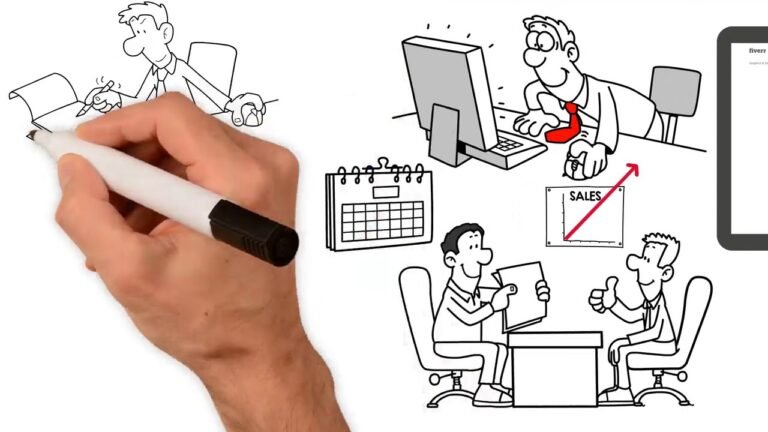There is no denying the fact that adding humor to your whiteboard animations can take them to the next level. In this blog post, we will explore various tips for incorporating humor into whiteboard animations effectively the way professional whiteboard animation services do. Let’s jump right into it!
1. Understand Your Audience
The first step in incorporating humor into your whiteboard animations is understanding your audience. Humor is subjective, and what one person finds funny, another might not. Consider the following when thinking about your audience:
– Demographics: Age, gender, cultural background, and other demographic factors can influence what type of humor will resonate.
– Industry: The appropriateness of humor can vary by industry. For example, a tech startup might have more flexibility with humor than a law firm.
– Preferences: What are the common interests or inside jokes of your audience? Understanding their preferences can help you tailor your humor to be more effective.
Conducting audience research and creating buyer personas can provide valuable insights into the type of humor that will work best for your viewers.
2. Keep It Relevant
Humor should be relevant to the content and context of your whiteboard animation. It should complement the message you are trying to convey rather than distract from it. Here’s how to ensure your humor is relevant:
– Align with your message: Make sure the humor supports the key points of your animation. For instance, if you’re explaining a complex process, use humor to simplify and highlight critical steps.
– Contextual jokes: Incorporate jokes that are directly related to the subject matter. For example, a video about project management could include humorous depictions of common workplace scenarios.
– Avoid off-topic humor: Stay focused on the main topic and avoid tangents that don’t add value to your message.
Relevance ensures that your humor enhances rather than detracts from the overall impact of your animation.
3. Use Visual Humor
Whiteboard animations are a visual medium, so leveraging visual humor can be particularly effective. Here are some ways to incorporate visual humor:
– Exaggerated illustrations: Use exaggerated expressions and actions to highlight humorous moments. For example, depicting a character with overly dramatic reactions to minor issues can be funny.
– Unexpected outcomes: Create situations where the outcome is humorously unexpected. For instance, showing a character taking an unconventional and amusing approach to solving a problem.
– Visual puns: Play with words and images to create visual puns. This can be a clever way to add humor that complements your narrative.
Visual humor is often universal and can be understood regardless of language, making it a powerful tool in whiteboard animations.
4. Incorporate Timing and Pacing
Timing and pacing are crucial elements of effective humor. The way you time and pace your jokes can significantly impact their effectiveness. Consider the following:
– Build-up and punchline: Structure your humor with a clear build-up and punchline. This creates anticipation and delivers a satisfying payoff.
– Pause for effect: Use pauses strategically to let the humor sink in. This can enhance the impact of a joke or a funny moment.
– Avoid overloading: Don’t cram too many jokes into a short space. Give each humorous moment room to breathe and be appreciated.
Effective timing and pacing help ensure that your humor lands well with your audience.
5. Leverage Character Development
Characters play a crucial role in whiteboard animations, and developing humorous characters can add a lot of charm to your video. Here’s how to create and use humorous characters:
– Distinct personalities: Give your characters distinct and exaggerated personalities that lend themselves to humor. For example, a bumbling yet lovable character can be a source of comedic relief.
– Relatable quirks: Incorporate relatable quirks and behaviors that audiences can identify with and find amusing.
– Interactions: Create humorous interactions between characters. Dialogue and scenarios that play off each character’s traits can be very entertaining.
Well-developed characters can become memorable and beloved elements of your whiteboard animations.
6. Use Wordplay and Puns
Wordplay and puns are classic forms of humor that can be very effective in whiteboard animations. Here’s how to use them:
– Puns: Incorporate puns that relate to your content. They can be a fun way to keep the tone light and engaging.
– Double entendres: Use phrases that have a double meaning to add layers of humor.
– Rhyme and rhythm: Play with the rhythm and rhyme of your script to create a whimsical and humorous effect.
Wordplay can add a clever and witty dimension to your whiteboard animation, making it more enjoyable for viewers.
7. Draw on Real-Life Experiences
Drawing on real-life experiences and observations can make your humor more relatable and impactful. Here’s how to incorporate real-life humor:
– Common situations: Depict common situations that your audience is likely to have experienced. This could be workplace scenarios, daily frustrations, or industry-specific challenges.
– Anecdotes: Share humorous anecdotes that are relevant to your message. These can be personal stories or general observations.
– Satire: Use satire to humorously critique or highlight aspects of real-life situations. This can be particularly effective for addressing industry-specific issues.
Real-life humor resonates well because it’s relatable and authentic.
Conclusion
Incorporating humor into your whiteboard animations can significantly boost engagement. Start experimenting with these tips and watch how humor can transform your whiteboard animations into compelling and delightful pieces of content.


